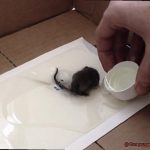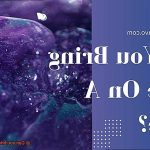Are you sick of sacrificing the health of our planet just to keep things together?
Well, you’re not alone. More and more folks are waking up to the impact they have on the environment, and that means there’s a growing demand for eco-friendly goodies.
But what about glue? Can we find an adhesive that not only gets the job done but also treats Mother Earth with kindness?
Lucky for us, the answer is a big fat YES. In this blog post, we’re going to dive deep into the world of eco-friendly glue and explore all the different options out there for conscious consumers like you.
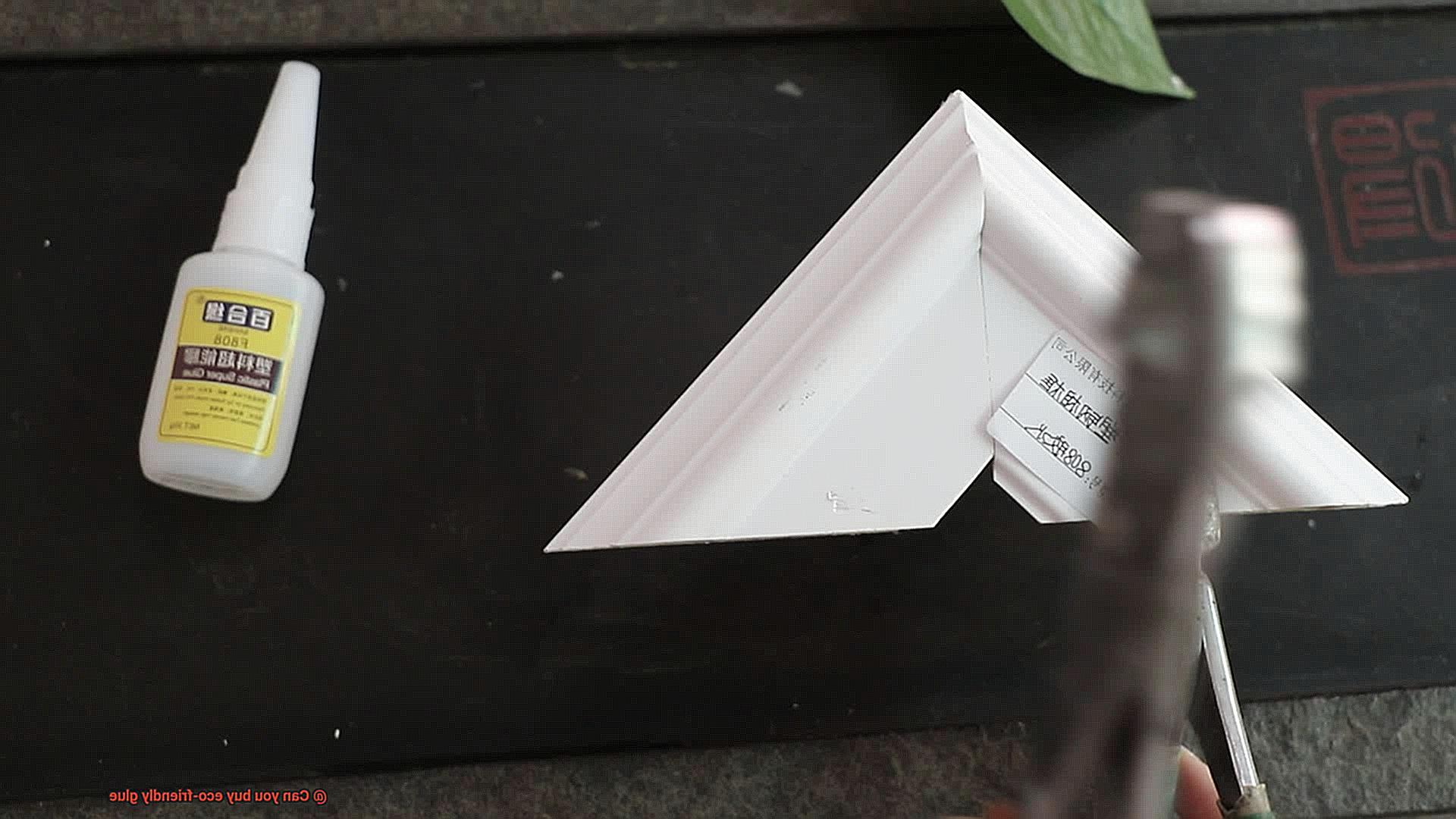
So, get ready to stick with us as we embark on this adhesive adventure.
The harmful effects of traditional glue on the environment
Contents
- 1 The harmful effects of traditional glue on the environment
- 2 What makes a glue eco-friendly? Exploring the key characteristics and components
- 3 Major adhesive manufacturers offering eco-friendly glue options
- 4 Smaller independent companies specializing in sustainable adhesive solutions
- 5 How to identify and choose eco-friendly glue: reading labels and certifications
- 6 Different forms of eco-friendly glue: liquid adhesives, sticks, and tapes
- 7 Using eco-friendly glue responsibly: following instructions and minimizing waste
- 8 Recycling and proper disposal of leftover glue and packaging materials
- 9 Conclusion
In the hustle and bustle of our daily lives, we often overlook the impact that seemingly insignificant items can have on our environment. One such item is traditional glue, a household staple that silently wreaks havoc on our ecosystems. Synthetic or chemical-based glue, as it is commonly known, harbors a host of harmful effects that demand our attention.
From the insidious release of volatile organic compounds (VOCs) to its non-biodegradability and contribution to deforestation, traditional glue presents us with a sticky situation that threatens the delicate balance of our planet. Let us delve into the intricate details and unravel the environmental perils that traditional glue imposes upon us.
Release of Volatile Organic Compounds (VOCs):

During the manufacturing process of traditional glue, a sinister cloud of volatile organic compounds escapes into the atmosphere. These noxious emissions, including formaldehyde and toluene, contaminate the air we breathe and contribute to alarming levels of air pollution.
Not only do these VOCs pose grave health risks, such as respiratory ailments and eye irritation for humans, but they also inflict severe damage upon those already burdened with pre-existing respiratory conditions.
Non-Biodegradability Leading to Land and Water Pollution:
Unlike its eco-friendly counterparts, traditional glue refuses to break down in the face of time. Its non-biodegradable nature means that it lingers indefinitely in our environment once discarded improperly.
Whether deposited within landfills or carelessly thrown into water bodies, this adhesive menace infiltrates both soil and water, poisoning vital resources essential for the sustenance of plant life, animals, and aquatic creatures alike. The result? A catastrophic disruption of fragile ecosystems teetering on the brink of collapse, threatening biodiversity as we know it.
Contribution to Deforestation:

The insatiable demand for traditional glue’s components fuels a relentless drive towards deforestation. Many chemical-based glues rely on resins derived from majestic trees such as pine and spruce. These valuable resources, extracted through wanton forest clearance, not only obliterate habitats crucial for countless species but also exacerbate the looming specter of climate change.
The devastating consequences of deforestation include the loss of the planet’s ability to absorb carbon dioxide, further accelerating the perilous progress of our warming world.
Use of Toxic Chemicals in Manufacturing:
The manufacturing process of traditional glue is riddled with the use of toxic chemicals that pose a dual threat to both the environment and human health. These insidious substances infiltrate water sources, polluting them with their malevolent touch. When mismanaged, they seep into the soil, tainting it with their poisonous presence. Furthermore, the energy-intensive methods employed in traditional glue’s production serve only to exacerbate pollution levels and unleash a deluge of greenhouse gas emissions upon our beleaguered planet.
What makes a glue eco-friendly? Exploring the key characteristics and components
Glue, the unsung hero of material bonding, is not often associated with environmental responsibility. Traditional glues are notorious for their harmful chemicals, contribution to pollution, and reliance on non-renewable resources. However, a more sustainable alternative has emerged – eco-friendly glue. In this article, we delve into the essential elements and components that make glue truly eco-friendly.
The Absence of Harmful Chemicals:
An eco-friendly glue stands out for its commitment to eliminating harmful chemicals. Traditional glues often contain volatile organic compounds (VOCs) and other toxic substances that pose serious threats to both human health and the environment. On the other hand, eco-friendly glues are crafted from natural or non-toxic ingredients, resulting in reduced air pollution and minimizing health hazards.

Biodegradability:
Unlike traditional glues that persist in the environment indefinitely, eco-friendly glues are designed with nature in mind. They possess the remarkable ability to biodegrade, breaking down into harmless substances through natural processes. By choosing biodegradable glue, we actively contribute to waste reduction in landfills and prevent long-term environmental damage.
Use of Renewable Resources:
Eco-friendly glue embraces the power of renewable resources. Unlike traditional glues that rely on petroleum-based ingredients derived from fossil fuels – a major contributor to carbon emissions and environmental degradation – eco-friendly options utilize plant-based ingredients or bio-based polymers sourced sustainably. This shift reduces our dependence on non-renewable resources and fosters a more sustainable production process.
Lower Energy Requirements During Manufacturing:
Another vital characteristic of eco-friendly glue lies in its lower energy requirements during manufacturing. Traditional glues often undergo energy-intensive production methods or require high temperatures for curing.
In stark contrast, eco-friendly options strive to minimize energy consumption through innovative techniques or by utilizing lower-temperature curing methods. By reducing energy usage, eco-friendly glues help to lower their overall carbon footprint.
Major adhesive manufacturers offering eco-friendly glue options
In a world where sustainability is becoming increasingly important, major adhesive manufacturers are stepping up their game and offering eco-friendly glue options. No longer the villain in the world of sustainability, glue is now being reimagined as a greener choice.
These manufacturers are making significant efforts to reduce their environmental impact and provide consumers with more eco-conscious choices.
Leading the charge is 3M, a giant in the adhesive industry. They have developed a range of eco-friendly adhesives that not only provide strong bonds but also minimize their impact on the environment. Say goodbye to harmful substances like volatile organic compounds (VOCs) with 3M’s eco-friendly glue options. Whether you’re in packaging, woodworking, or even the automotive industry, 3M has got you covered.

Henkel is another major player that takes sustainability seriously. Under their brand name Loctite, they offer a wide range of eco-friendly adhesives formulated with renewable materials and free from hazardous substances. From construction to electronics and transportation, Henkel’s eco-friendly glue options will meet your needs while keeping the planet in mind.
Let’s not forget about Sika, another adhesive manufacturer that deserves recognition. Their eco-friendly adhesives are designed to be high-performance while minimizing environmental impact. With no solvents or other harmful substances, Sika’s glue options are safe for users and the environment. You’ll find their eco-friendly adhesives being used in construction, automotive, and marine industries.
If you’re looking for smaller companies specializing in eco-friendly adhesives, Eclectic Products is the answer. Their E6000 brand offers non-toxic, odorless, and VOC-free adhesives perfect for crafters and DIY enthusiasts. Stick to your creative projects without sticking it to the environment with Eclectic Products’ adhesive options.
When purchasing adhesive products, it’s important to look out for specific eco-friendly certifications or labels such as Green Seal, EcoLogo, and USDA BioPreferred. These certifications ensure that you’re choosing a truly sustainable option.
Smaller independent companies specializing in sustainable adhesive solutions
In a world overflowing with adhesive options, it’s time to stick to choices that not only bond strongly but also have a minimal impact on our planet. While major adhesive manufacturers have begun embracing sustainability, a league of smaller independent companies specializing in sustainable adhesive solutions has emerged as the true superheroes leading the charge. With their unwavering focus on eco-friendly glue, these companies are revolutionizing the industry, driving innovation, and promoting environmental responsibility.
Specialization for Sustainable Solutions:
Unlike their larger counterparts with diverse product portfolios, these specialized companies channel all their expertise into developing innovative and eco-friendly glue formulations. Investing in extensive research and development, they engineer adhesives that meet rigorous performance standards while adhering to strict sustainability criteria.
Harnessing Renewability:
Renewable resources take center stage for these smaller independent companies as they prioritize the use of plant-based ingredients, natural resins, and biodegradable polymers as alternative raw materials. By reducing reliance on fossil fuels, they significantly shrink the carbon footprint of their products.
Banishing Toxicity:
Bid farewell to toxic chemicals. Traditional glues often harbor volatile organic compounds (VOCs), which contribute to indoor air pollution and pose health risks. However, eco-friendly glue manufacturers make it their mission to prioritize low or zero VOCs, ensuring the safety of users and the environment alike.
Embracing Lifecycle Considerations:
Sustainable adhesive solutions transcend mere formulation. These eco-heroes focus on creating adhesives that are easily recyclable or biodegradable at the end of their lifecycle. Consequently, glued items can be properly disposed of or recycled, minimizing waste and bolstering sustainability efforts.
Ethical Practices and Social Responsibility:
Transparency is key for many smaller independent companies specializing in sustainable adhesive solutions. They take pride in openly sharing information about their ingredients, manufacturing processes, and supply chains. By empowering consumers to make informed choices, these companies inspire support from those who value ethical practices and social responsibility.
How to identify and choose eco-friendly glue: reading labels and certifications
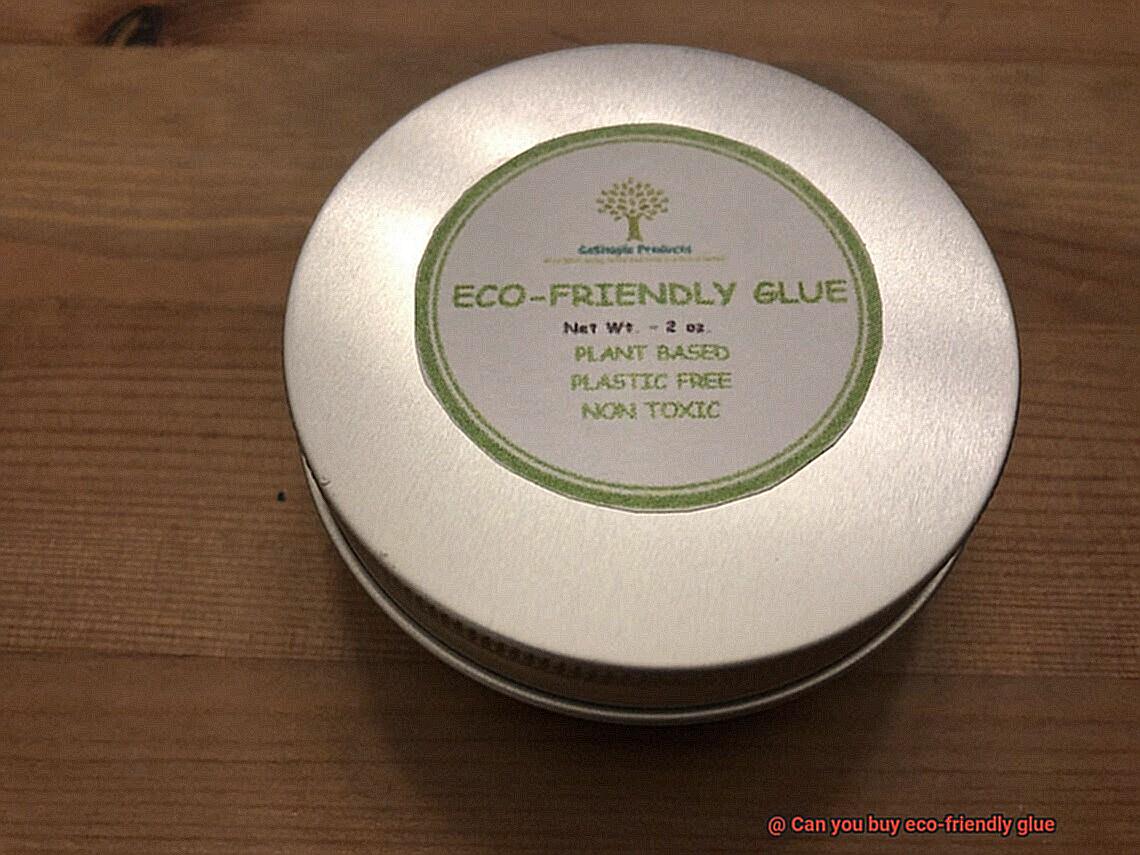
One small yet impactful way to do this is by choosing eco-friendly glue. But how do you identify and select the right one? By reading labels and certifications. In this article, we will explore the importance of reading labels and certifications when choosing eco-friendly glue.
Look for Clear Eco-Friendly Labels:
When browsing through glue options, keep an eye out for labels that clearly state “eco-friendly,” “environmentally friendly,” or “sustainable.” These labels are like little green flags waving in the breeze, indicating that the glue has been manufactured with minimal harm to the environment and meets specific sustainability criteria. Choosing glues with these labels ensures that you are making a conscious choice towards a greener planet.
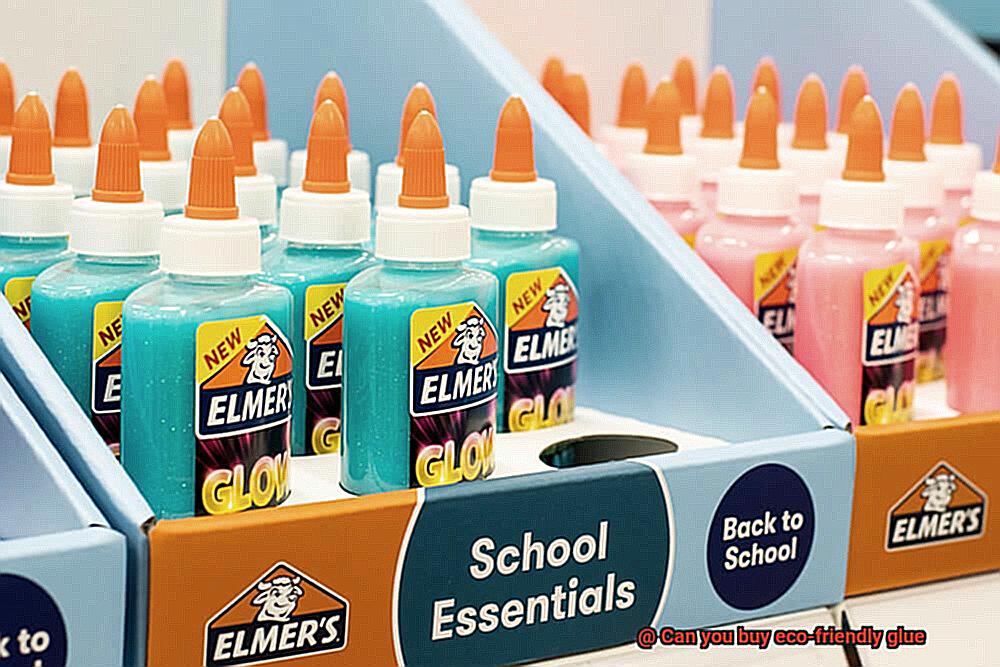
Check Ingredient Listings:
To ensure your glue is truly eco-friendly, it’s essential to read the ingredient listing on the label. Avoid glues that contain harmful chemicals like formaldehyde, toluene, or phthalates. Instead, opt for glues made from natural or plant-based ingredients. These alternatives are not only better for the environment but also safer for your health.
Seek Reputable Certifications:
Certifications from trusted organizations add credibility to eco-friendly claims. Look for certifications such as the Forest Stewardship Council (FSC), which guarantees that the glue is sourced from responsibly managed forests. The Green Seal certification signifies that the glue meets rigorous environmental standards. These certifications provide peace of mind, knowing that you’re choosing a glue that has undergone testing and meets specific eco-friendly criteria.
Read the Entire Label:
To make an informed decision, it’s crucial to read and understand the entire label, including any warnings or precautions. Some glues may be labeled as eco-friendly but may have specific handling instructions due to their adhesive properties or drying time. By reading the label thoroughly, you can ensure that you’re using the glue safely and effectively.
Look for Additional Eco-Friendly Claims:
Some labels may include additional eco-friendly claims, such as biodegradability or low VOC (volatile organic compound) content. Biodegradable glues break down naturally over time, reducing their impact on the environment. Low VOC glues emit fewer harmful chemicals into the atmosphere, promoting better air quality. These additional claims further indicate that the glue is environmentally friendly.
Different forms of eco-friendly glue: liquid adhesives, sticks, and tapes
Discover the world of eco-friendly glue and make a sustainable choice for all your bonding needs. Whether you’re a craft enthusiast, a DIY guru, or simply someone who wants to make more environmentally friendly choices, there are several forms of eco-friendly glue available on the market today. In this blog post, we will explore the captivating world of eco-friendly glue: liquid adhesives, sticks, and tapes.
Let’s start with liquid adhesives, the versatile powerhouse of eco-friendly glues. These glues are water-based and free from harmful chemicals and toxins. With brands like Elmer’s Naturals and Aleene’s Original Tacky Glue, you can trust that you are making a sustainable choice without sacrificing performance. From paper crafts to woodworking and general household repairs, these glues have got you covered.
Next up, we have stick glues, the mess-free wonders of eco-friendly bonding. Made from natural ingredients such as plant starch or cellulose derivatives, these glues offer convenience and reliability. Brands like Tombow Mono Adhesive and Scotch Naturals provide non-toxic and washable options for all your arts and crafts projects. When time is of the essence, these stick glues come to the rescue.
If you’re looking for an alternative to traditional glue, eco-friendly tapes might just be the answer. Made from sustainable materials like paper or plant-based adhesives, these tapes pack a punch when it comes to durability. From packaging to crafts and everything in between, brands like Scotch Greener Tape and ECO-Bond Packaging Tape offer eco-friendly options that get the job done while being kinder to the environment.
But wait, there’s more. In addition to these three main forms of eco-friendly glue, there are specialty glues designed for specific applications. Need a fabric glue for sewing and fabric crafts? Look no further. Want a wood glue formulated for woodworking projects? We’ve got you covered there too.
It’s important to note that while eco-friendly glue options have expanded in recent years, availability and cost may still be factors to consider. But remember, the long-term benefits to the environment and personal health make them a worthwhile investment.
Using eco-friendly glue responsibly: following instructions and minimizing waste
Step into the world of eco-friendly glue, where responsible usage takes center stage. In this section, we will delve into the significance of following instructions and minimizing waste when using these adhesive wonders. So gather your crafting supplies, and let’s embark on a journey of eco-conscious creativity.
Following instructions is the cornerstone of using eco-friendly glue responsibly. By adhering to the guidelines provided, you ensure that the glue is applied in just the right amount and manner, guaranteeing optimal bonding. This not only guarantees the success of your project but also minimizes any potential waste or misuse. So take a moment to immerse yourself in those instructions, reading them carefully and following each step meticulously.
Proper storage is another vital aspect of using eco-friendly glue responsibly. Treat your adhesive with care by storing it in a cool, dry place and sealing the container tightly after each use. By doing so, you maintain its effectiveness and maximize its lifespan. This simple act helps you avoid unnecessary waste and ensures that your glue is ready to unleash its magic whenever inspiration strikes.
Now let’s tackle the challenge of minimizing waste. A single drop of eco-friendly glue can work wonders, so it’s essential to use only what you need for your project. Avoid excessive application, as it may lead to excess adhesive that could go to waste. However, if you find yourself with leftover glue, don’t be too hasty to discard it. Many eco-friendly glues can be stored for an extended period if properly sealed and stored. Who knows when you might find the perfect opportunity to bring it back to life in a future project?
Instead of relegating leftover glue to the wastebasket, why not explore alternative applications? Unleash your creativity by repurposing it for smaller repairs or crafts. This innovative mindset not only reduces waste but also allows you to make the most out of your eco-friendly adhesive, transforming ordinary moments into extraordinary masterpieces.
When it’s time to bid farewell to your eco-friendly glue, do so responsibly. Dispose of any excess or dried adhesive in an environmentally friendly manner. Some glues can be easily removed with water, while others may require specific solvents or cleaners. Always consult the manufacturer’s instructions for proper cleanup methods, ensuring that you leave no trace behind.
Lastly, don’t keep this knowledge to yourself. Become an ambassador of eco-friendly glue responsibility by sharing your insights and recommendations with others. Educate your fellow crafters and DIY enthusiasts about the importance of reducing waste and following proper usage guidelines. Together, we can foster a community that embraces eco-consciousness in every adhesive endeavor.
Recycling and proper disposal of leftover glue and packaging materials
No matter who you are, it’s crucial to know how to properly dispose of and recycle leftover glue and packaging materials. By doing so, you can contribute to a sustainable and eco-friendly future that we all strive for.
Let’s kick things off with leftover glue. Instead of mindlessly tossing those half-empty bottles into the trash, consider recycling them. Many recycling centers happily accept plastic or glass glue bottles. But hold on, before you drop them off, make sure to clean the containers and remove any stubborn adhesive residue. This simple step ensures a smooth recycling process and helps protect our environment.
In cases where recycling isn’t an option for your glue container, don’t panic. You can still dispose of it responsibly in the trash. However, it’s always a good idea to check with your local waste management authorities first. They might have specific instructions for adhesive containers in your area, ensuring that they are disposed of in an environmentally responsible manner.
Now, let’s switch gears and talk about packaging materials. Whether it’s cardboard boxes, plastic wrap, or foam peanuts, they all need to be disposed of properly to minimize waste. Cardboard boxes are easy-peasy – just flatten them and toss them in your recycling bin. Just make sure they’re squeaky clean and free from any glue or excessive tape.
Plastic wrap is another commonly used packaging material. Luckily, many places offer designated drop-off locations or special recycling programs for plastic wrap. Take a moment to check with your local recycling facilities to find out where you can recycle plastic wrap in your area. Let’s keep that plastic out of our landfills.
Ah, foam peanuts – the bane of many recyclers’ existence. They can be quite tricky to recycle, but fear not. Some packaging supply stores might accept them for reuse, so it’s worth checking if there are any in your vicinity. If not, get creative and reach out to local businesses or organizations that could benefit from reusing foam peanuts. Alternatively, see if your community has a foam packaging recycling program. These programs allow you to drop off foam peanuts at designated locations, ensuring they are properly recycled.
Let’s not forget the importance of reducing our use of packaging materials whenever possible. Opt for products with minimal packaging or choose eco-friendly options like biodegradable or compostable materials. These small changes in our daily lives can have a significant impact on preserving our planet for future generations.
zkIhW4zFwYo” >
Also Read: What is the Best Eco Friendly Glue?
Conclusion
Yes, you can absolutely purchase eco-friendly glue.
In fact, there are many options available on the market today that are designed to be environmentally friendly. These glues are made using sustainable materials and manufacturing processes that minimize harm to the planet.
So, if you’re someone who values both creativity and sustainability, eco-friendly glue is the perfect choice for your projects. Not only will you be able to stick things together effectively, but you’ll also be doing your part in reducing your carbon footprint.


